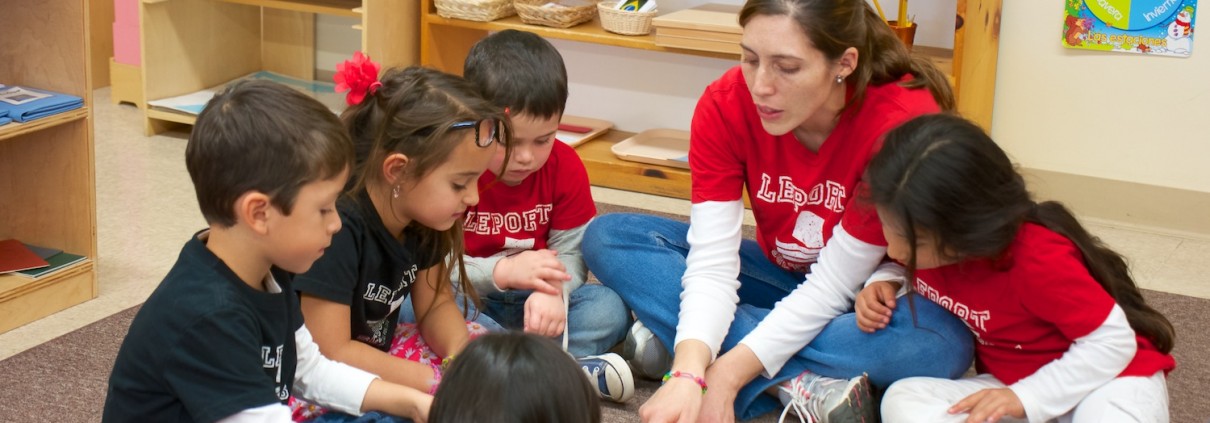The Importance of a Five-Day School Program
 Watching your young child grow up so quickly can be bittersweet—one minute you’re celebrating his first steps and his first words, then you blink and—gasp!—your child is ready for his first day of school!
Watching your young child grow up so quickly can be bittersweet—one minute you’re celebrating his first steps and his first words, then you blink and—gasp!—your child is ready for his first day of school!
When the time comes for a child to start preschool, parents often wonder: May it be best if I enrolled my child part-time? He’s still so young; there’s plenty of time for school! Does he really need to go five days a week? Isn’t it better to let him stay home a few days during the week? I’d love to still have him with me, too!
We understand that it may be hard to let your three- or four-year-old child go, especially if you have the luxury of being able to be home with her a day or two a week! Many of us at LePort are parents ourselves, and we totally get how precious it is to be able to enjoy time with your child. It would be much easier for us to offer three- and two-day schedules, like many of our competitors do, and avoid this questions altogether.
So why do we insist on a five-day schedule for three-year-olds? The answer is simple: In our experience, preschoolers need the consistency of attending school every day to benefit optimally from their Montessori experience.
 Part-time students don’t derive the full benefit from the Montessori environment as they never really get settled down in a consistent routine. I once worked at a Montessori school where primary students were given the option of attending school part-time for just three days a week. After a while, I began to observe a great difference between the part-time students and the full-time students who came to school five days a week: The part-time students appeared to spend much of their time aimlessly wandering around the classroom, while the full-time students were actively engaged in lessons on the floor or at a table, working independently, working with a classmate, or working with a teacher.
Part-time students don’t derive the full benefit from the Montessori environment as they never really get settled down in a consistent routine. I once worked at a Montessori school where primary students were given the option of attending school part-time for just three days a week. After a while, I began to observe a great difference between the part-time students and the full-time students who came to school five days a week: The part-time students appeared to spend much of their time aimlessly wandering around the classroom, while the full-time students were actively engaged in lessons on the floor or at a table, working independently, working with a classmate, or working with a teacher.
In Montessori, we empower children to choose work on their own and to concentrate on their work. This voluntary choice, this child-initiated concentration is at the heart of the amazing academic achievements that astound adults, and one of the key aspects of motivation in Montessori. However, the part-time students I observed rarely had this drive; they didn’t seem to know what to do, or which lessons or materials to select. Their days often went by without even one episode of concentration.
 Young children thrive when their daily lives are full of consistent routines. They do best when they can predict what is going to happen next. This kind of consistency happens when a child goes to school for five consecutive days in a row each week versus attending school for only two or three days a week. It is hard for a child to figure out their routine when they go to school every other day or for just a few days in a row!
Young children thrive when their daily lives are full of consistent routines. They do best when they can predict what is going to happen next. This kind of consistency happens when a child goes to school for five consecutive days in a row each week versus attending school for only two or three days a week. It is hard for a child to figure out their routine when they go to school every other day or for just a few days in a row!
Part-time students have a harder time transitioning to school, and often need to re-adjust after three or four days away. Part-time students, who attended for three consecutive days, then took four days off, often struggled at the beginning of each week—almost like being new to school again. And, of course, once they were finally settled after a few days, it was time again for them to have another long break before returning back to class. (Ask any teacher what the first days of school are like after a long break such as winter break or spring break. Chances are, teachers will tell you that those first days back to school the students have to be given time to get back into their classroom routine. Unfortunately, part-time students face that kind of transition every week.)
 Part-time students feel left out of the full-timers close classroom communities. The part-time students in my class also appeared to be less likely to have strong bonds with their classmates. Why? They were missing out on important events or lessons that were given on the days they were off. Their full-time peers tended to gravitate toward other children who were there each day, children they could rely on to be there to play and work with. Disconnected from the rhythm of the classroom, and implicitly perceived as being less reliable (because often absent) playmates, the part-timers sadly lived at the edges of our solid classroom community—despite my best efforts to integrate them anew each week.
Part-time students feel left out of the full-timers close classroom communities. The part-time students in my class also appeared to be less likely to have strong bonds with their classmates. Why? They were missing out on important events or lessons that were given on the days they were off. Their full-time peers tended to gravitate toward other children who were there each day, children they could rely on to be there to play and work with. Disconnected from the rhythm of the classroom, and implicitly perceived as being less reliable (because often absent) playmates, the part-timers sadly lived at the edges of our solid classroom community—despite my best efforts to integrate them anew each week.
In contrast with these struggles faced by part-time students, after an initial adjustment period full-time students transition into their school routine every morning with no further separation anxiety. They are able to come into class confidently; they are more likely to be motivated and to be able to choose work on their own, and more prepared to work throughout the day independently. Because they felt at home at school, because they knew the routine, because they quickly became an integral part of the classroom community, full-time students usually are more self-sufficient and need less adult approval or assistance. They more actively socialize with friends during lunch and recess and move about their day with confidence and joy.
The worry and anxiety that sometimes occur when a young child starts attending school for the first time will dissipate once they are able to establish a routine and come to the realization that school is an enjoyable place where learning and friendships occur. The five-day-a-week schedule enables students to feel safe and relaxed in the classroom and aids them in forming strong bonds with their teachers and friends. We realize that it may be challenging for you to let your child attend school every day, yet we hope that you are willing support him in this new phase of his life by sending him at least five mornings a week, giving him the consistency and community he needs to flourish.




